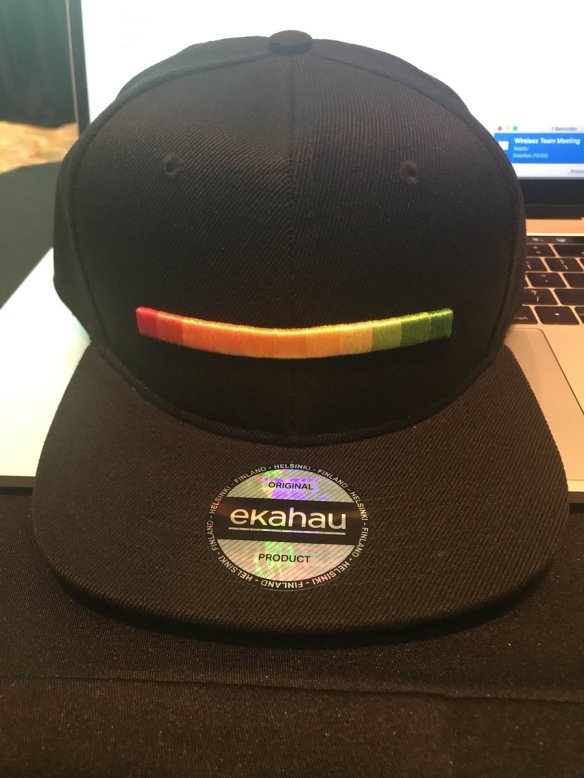Must Read: When Redundancy Actually Helps
Stumbled upon an excellent redundancy-focused blog post (HT: High Scalability). Here are just a few important points:
- Don’t make things too complex;
- Don’t add more risk than you take away;
- You’ve got to fail over in the right direction;
- You must be able to return to fully-redundant mode.
I’m guessing that people promoting stretched VLANs, vSphere and/or NSX clusters running across multiple sites, weird combination of EVPN and OTV, and a dozen similar shenanigans never considered any one of these points.
AfPIF Day Two: International Traffic, the Economics of Peering, and a Look Ahead to 2030

In the last five years, Africa’s international traffic patterns have changed, with international and intra regional traffic growing, according to the latest statistics from Telegeography, presented at this year’s AfPIF.
Johannesburg, Cape Town, Lagos, and Nairobi maintain their top hub status, but Cotonou, Kigali, Libreville, Abidjan, and Dakar have emerged as major hubs as international traffic grows. Cotonou recorded 88Gps between 2018 and 2019, showing a 77% growth, while Kigali recorded 75Gbps, a 92% growth, and Libreville had 113Gbps at 71% growth.
This was attributed to a drastic reduction in connectivity costs, which led to more data center space and eventual demand for more capacity to other international hubs. West African connection, especially between Dakar, Abidjan, Accra, and Lagos has also increased.
Telegeography monitors international transit traffic and the presentation was one of the highlights of the day. Domestic traffic is a bit harder to capture but Telegeography promised to work with more providers to get future snapshots of the growing traffic.
The presentation by Telegeography explored the shifting connectivity landscape in Africa and its effect on interconnection hubs, showing that new hubs may soon emerge, as more and more cities reduce the cost of connectivity and invest in more Continue reading
Install Golang Ubuntu1804
Installing Golang on Ubuntu 1804.Install Golang Ubuntu1804
This will just be a quick post on how to install Golang on Ubuntu 1804. There will be no earth shattering knowledge bombs, it's more of a documentation post for myself. Others may or may not find it useful. Code versions used for this lab Ubuntu - 1804 Golang - 1.15.1 Download Download...Veritas Moves Into VMware-Based Clouds
Veritas announced availability of its Enterprise Data Services Platform for VMware environments...
Splunk Plunks Down $1.05B, Acquires SignalFx
Splunk today announced an agreement to acquire SignalFx, which provides real-time monitoring and...
Can a Composable Hypervisor Re-Imagine Virtualization?
“Virtualization is changing and what people need from virtualization is changing,” said Intel's...
Big Switch Cozies Up to AWS Outposts
Big Switch says its software-defined networking products are “ideally suited” for cloud...
CloudGenix Supercharges SD-WAN With Azure Integration
The company claims the integration will provide remote offices around the world secure, high-speed...
Best practices: MLAG backup IP
Recently there was a conversation in the Cumulus community (details in the debriefing below) about the best way to build a redundant backup IP link for multi-chassis link aggregation (MLAG). Like all good consulting-led blogs, we have a healthy dose of pragmatism that goes with our recommendations and this technology is no different. But if you’re looking for the short answer, let’s just say: it depends.
The MLAG backup IP feature goes by many names in the industry. In Cisco-land you might call this the “peer keepalive link,” in Arista-ville you might call this the “peer-address heartbeat” and in Dell VLTs it is known as the “backup destination.” No matter what you call it, the functionality offered is nearly the same.
What does it do?
Before we get into the meat of the recommendation, let’s talk about what the backup IP is designed to do. The backup IP link provides an additional value for MLAG to monitor, so a switch knows if its peer is reachable. Most implementations use this backup IP link solely as a heartbeat, meaning that it is not used to synchronize MAC addresses between the two MLAG peers. This is also the case with Cumulus Continue reading
The Sky is Not Falling For Ekahau

Ekahau Hat (photo courtesy of Sam Clements)
You may have noticed quite a few high profile departures from Ekahau recently. A lot of very visible community members, concluding Joel Crane (@PotatoFi), Jerry Olla (@JOlla), and Jussi Kiviniemi (@JussiKiviniemi) have all decided to move on. This has generated quite a bit of discussion among the members of the wireless community as to what this really means for the company and the product that is so beloved by so many wireless engineers and architects.
Putting the people aside for a moment, I want to talk about the Ekahau product line specifically. There was an undercurrent of worry in the community about what would happen to Ekahau Site Survey (ESS) and other tools in the absence of the people we’ve seen working on them for so long. I think this tweet from Drew Lentz (@WirelessNerd) best exemplifies that perspective:
Intel Reveals AI Accelerator Chips for Deep Learning in Data Centers
Intel revealed its first chipsets designed for artificial intelligence in large data centers.
VMware Buying Spree Continues With Intrinsic
VMware bought Intrinsic, an application security startup, in its fifth acquisition in three months,...
Microsoft, Intel, and Red Hat Back Confidential Computing
The Linux Foundation’s Confidential Computing Consortium is a who’s who of cloud providers,...
Closing the Shutters on EtherealMind

I've been publishing on Etherealmind for more than ten years and its been quite a journey. I've changed and its time move on.
The post Closing the Shutters on EtherealMind appeared first on EtherealMind.
MEF Unveils Long-Awaited SD-WAN Standard
MEF unveiled the first standardized definition for SD-WAN. The the definition stands to help to...